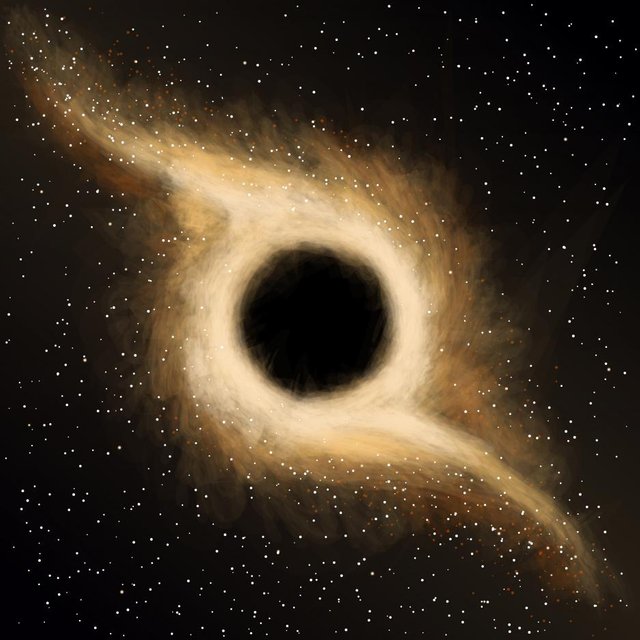Scientists have confirmed that there is a super gigantic black hole in the heart of the galaxy

Scientists have discovered that a supermassive black hole lies in the center of the galaxy. They have reached this conclusion after watching how material is approaching the so-called. horizon of events.
Astronomers have used a Big Telescope instrument in Chile to study the supposed supermassive black hole Sagittarius A * - a bright and very compact astronomical radio in the center of the Milky Way near the borders of the Sagittarius and Scorpio constellations.
The instrument itself is called GRAVITY . It combines the light from the four VLTs to create a "super telescope" with a diameter of 130 m. Thanks to it, astronomers have detected flashes of infrared radiation coming from Sagittarius A *. It was believed that they originated from the hot gas clusters that moved along the orbit of the event horizon - in the general theory of relativity, it is a space-time boundary beyond which events can not influence an external observer. Here gravity is so intense that nothing - even light - can escape the attraction of the black hole.
These gas clusters are moving at an incredible speed - about a third of that of light. The closest point to which they can approach the black hole without crossing the horizons of events is known as the innermost stable orbit. That is where the aforementioned flashes come from.
See also: What are black holes?
"It's impressive to see how material circles around the orbit of a black hole with about 30 percent of the speed of light," said Oliver Paful, a scientist at Max Planck Institute of Extraterrestrial Physics.
The findings made by astronomers prove that this supermassive black hole really exists. The gas is probably associated with a star called S2, which, according to Einstein's general theory of relativity, could cause bright flashes when it passes the black hole every 16 years. For the first time we also see material coming close to a black hole.
Astronomers hope that their discoveries will allow them to study the black holes in more detail and understand exactly how they manage to dispel their gushing energies from the galaxies. "It's like knowing the Sun is a hot and gaseous sphere and trying to understand how the nuclear reaction works," says Roger Blandford, professor of astrophysics at Stanford University, before the New York Times.
What's more, scientists are currently trying to shoot Sagittarius A *. If they do, it will be the first shot of a black hole ever made.